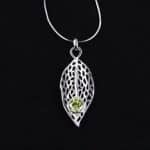Jewelry making beading patterns offer a creative and intricate way to design stunning pieces of jewelry. Whether you are a beginner looking to explore the world of beading or an experienced jeweler seeking new challenges, these patterns provide a roadmap for creating beautiful accessories. From simple stitches to complex designs, beading patterns can help elevate your jewelry-making skills and unleash your creativity.
The history of beading in jewelry making dates back centuries, with various cultures incorporating beads into their adornments. Today, this age-old tradition has evolved into a popular craft enjoyed by many enthusiasts worldwide. By understanding the origins and significance of beading in jewelry making, you can appreciate the cultural and artistic value that these patterns hold.
Using beading patterns in jewelry making comes with a range of benefits. Not only do they provide guidance and structure for your designs, but they also offer inspiration and spark new ideas for unique creations. Beginners can learn essential techniques through simple patterns, while experienced jewelers can push their boundaries with more intricate designs. With the right tools, materials, and tips in hand, anyone can master the art of jewelry making using beading patterns.
History of Beading in Jewelry Making
The history of beading in jewelry making is a rich and fascinating one, dating back thousands of years. Beads have been used in ornamentation and adornment since ancient times, with evidence of beadwork found in archaeological sites across the globe. In many cultures, beads were not only decorative but also held significant cultural, spiritual, and social meanings.
Ancient Origins
Dating back to early civilizations such as Ancient Egypt, Mesopotamia, and the Indus Valley, beads were crafted from a variety of materials including bone, clay, metal, and precious stones. These intricate beadwork pieces were often used as symbols of status or religious significance. The art of beading has been passed down through generations, evolving along with changing trends and styles.
Indigenous Beadwork
In North America, indigenous tribes such as the Navajo, Cherokee, and Sioux have a long-standing tradition of intricate beadwork in their jewelry and clothing. Each tribe has its distinct style and patterns that hold unique cultural meanings. Beads were traditionally traded among tribes and served as a form of currency in some cases. Today, indigenous beadwork continues to thrive as a way to preserve cultural heritage and artistic expression.
Modern Revival
In the 20th century, there was a resurgence of interest in traditional crafts like beading as people sought out handmade and unique pieces of jewelry. This revival led to the development of modern beading techniques and patterns that blend traditional methods with contemporary designs. Today, jewelry making enthusiasts can explore a vast array of beading patterns inspired by historical traditions from around the world.
Benefits of Using Beading Patterns in Jewelry Making
When it comes to jewelry making, using beading patterns can greatly benefit both beginners and experienced jewelers alike. These patterns provide a roadmap for creating intricate and beautiful pieces, guiding the maker through each step of the process. Here are some advantages of using beading patterns in jewelry making:
- Organization: Beading patterns help to keep your project organized by outlining the materials needed, the order of bead placement, and any special techniques required.
- Inspiration: Beading patterns can spark creativity and inspire new ideas for unique designs. They offer a starting point for creating your own personalized jewelry pieces.
- Guidance: For beginners, beading patterns serve as a valuable learning tool, teaching fundamental techniques and building skills gradually. Even experienced jewelers can benefit from following advanced patterns to challenge themselves and expand their repertoire.
In addition to these benefits, using beading patterns in jewelry making also saves time by providing a clear roadmap for the project. Rather than guessing at each step or improvising as you go along, following a pattern ensures that you achieve the desired result with precision and accuracy. Whether you are creating a simple bracelet or a complex statement necklace, utilizing beading patterns can enhance your jewelry-making experience and lead to stunning final products.
- Accuracy: Beading patterns ensure that your finished piece turns out exactly as intended, with consistent spacing and alignment of beads.
- Variety: With countless beading pattern designs available online and in books, you have access to a wide range of styles and techniques to experiment with.
- Ease of Sharing: Beading patterns make it easy to share your creations with others or replicate popular designs for gifts or selling purposes.
Different Types of Beading Patterns for Beginners
Beading is a popular technique in jewelry making that allows artisans to create intricate and beautiful designs using small beads. For beginners looking to explore the world of jewelry making with beading patterns, there are various types of patterns to start with. Here are some different types of beading patterns that beginners can try out:
- Simple Stringing: One of the easiest and most basic beading patterns for beginners is simple stringing. This involves threading beads onto a string or wire in a straight line or alternating pattern to create bracelets or necklaces.
- Brick Stitch: Brick stitch is another beginner-friendly beading pattern that involves weaving beads in a brick-like pattern. This technique is great for creating geometric designs or adding embellishments to jewelry pieces.
- Right Angle Weave (RAW): Right Angle Weave is a versatile beading stitch that beginners can use to create intricate patterns by weaving beads together at right angles. This technique is ideal for creating woven beadwork like pendants or earrings.
As beginners gain more confidence in their beading skills, they can also explore more complex patterns such as peyote stitch, herringbone stitch, and French beading techniques. These advanced patterns allow for even more creativity and intricacy in jewelry making with beads.
Overall, starting with simple beading patterns for beginners is a great way to build foundational skills and practice the art of jewelry making with beads. By gradually exploring different types of patterns and techniques, beginners can discover their style and develop their craftsmanship in creating unique and personalized jewelry pieces.
Advanced Beading Patterns for Experienced Jewelers
Complex Stitch Techniques
For experienced jewelers looking to challenge themselves, advanced beading patterns often involve complex stitch techniques. These intricate patterns require a deep understanding of different bead weaving stitches such as peyote stitch, herringbone stitch, and right-angle weave. By mastering these techniques, jewelers can create stunning designs with intricate detail and texture.
Layered Designs and Dimension
Advanced beading patterns for experienced jewelers often delve into layered designs and dimension. Incorporating multiple layers of beads can create a multi-dimensional effect in jewelry pieces, adding depth and visual interest. By exploring these advanced techniques, jewelers can elevate their creations to new levels of artistry and complexity.
Incorporating Mixed Media
Experimenting with mixed media is another hallmark of advanced beading patterns for experienced jewelers. By incorporating different materials such as crystals, gemstones, metal charms, or even fabric elements into their designs, jewelers can push the boundaries of traditional beadwork. This allows for endless creative possibilities and unique jewelry pieces that stand out from the crowd. Experienced jewelers can take their skills to the next level by combining various materials in innovative ways within their beading patterns.
Tips and Tricks for Successfully Using Beading Patterns
When delving into the world of jewelry making using beading patterns, there are a few tips and tricks that can help make the process smoother and more enjoyable. One key tip is to always start with the basics and gradually work your way up to more complex patterns as you gain experience. This approach will not only build your skills but also boost your confidence in creating beautiful pieces.
Another important aspect to consider when using beading patterns is to pay attention to detail. Precision is key in jewelry making, especially when it comes to following a pattern. Make sure to carefully read through the instructions, double-check measurements, and stay organized with your beads and supplies. Taking these extra steps will result in professional-looking jewelry that truly shines.
Furthermore, don’t be afraid to get creative and add your own personal touch to the beading patterns you are working on. Experiment with different color combinations, bead sizes, or even incorporate unique elements like charms or pendants. This creativity will set your jewelry apart and make it truly one-of-a-kind. Remember, practice makes perfect, so don’t hesitate to try out new techniques and push yourself to explore new horizons in jewelry making.
| Tips | Benefits |
|---|---|
| Start with basic patterns | Build skills and confidence |
| Pay attention to detail | Create professional-looking jewelry |
| Get creative | Add personal touch and uniqueness |
Popular Beading Pattern Designs for Necklaces, Bracelets, and Earrings
When it comes to creating stunning jewelry pieces, using popular beading pattern designs for necklaces, bracelets, and earrings can elevate your creations to the next level. Beading patterns provide a guide for jewelers to follow while also offering room for creativity and personalization. Whether you are a beginner or an experienced jeweler, there are numerous designs to choose from that cater to different skill levels and styles.
For those just starting in jewelry making beading patterns, simple and classic designs like a basic string of beads for necklaces or a single wrap bracelet can be great projects to begin with. These uncomplicated patterns help beginners understand the basics of weaving beads together and forming cohesive jewelry pieces. As they gain more confidence and skills, they can gradually progress to more intricate designs that involve various techniques such as beadweaving, wirework, or bead embroidery.
Experienced jewelers often gravitate towards advanced beading pattern designs that challenge their craftsmanship and creativity. Intricate beadwork like peyote stitch patterns, herringbone weave designs, or multi-strand necklaces require precision and attention to detail.
These complex patterns not only showcase the jeweler’s skills but also allow them to explore new techniques and experiment with different materials. The beauty of jewelry making with beading patterns lies in the endless possibilities of design combinations and color variations that can be explored and transformed into unique wearable art pieces.
| Experience Level | Example Design |
|---|---|
| Beginner | Simple string of beads necklace |
| Intermediate | Single wrap bracelet with clasp |
| Experienced | Multi-strand herringbone weave necklace |
Tools and Materials Needed for Jewelry Making With Beading Patterns
When it comes to creating beautiful jewelry using beading patterns, having the right tools and materials is essential. Whether you are a beginner just starting out or an experienced jeweler looking to expand your skills, having the appropriate supplies will make the process much smoother and more enjoyable. Here are some of the basic tools and materials needed for jewelry making with beading patterns:
One of the most important tools for working with beading patterns is a good quality set of pliers. Round nose pliers are perfect for creating loops in wire, while flat nose pliers are great for gripping and shaping metal components. You’ll also need wire cutters to trim excess wire and create clean cuts. Additionally, investing in a set of crimping pliers can help you secure crimp beads in place more easily.
In terms of materials, it’s crucial to have a variety of beads on hand in different shapes, sizes, and colors to bring your beading patterns to life. Seed beads, crystals, gemstones, and pearls are popular choices for adding texture and dimension to your designs. You’ll also need beading thread or wire to string your beads together, as well as clasps, jump rings, and other findings to finish off your pieces securely.
Having a designated work space with good lighting and proper storage containers for your tools and materials is also important for staying organized and focused while working on your jewelry projects. By investing in quality tools and sourcing high-quality materials, you can create stunning pieces of jewelry that showcase your creativity and skill in jewelry making with beading patterns.
Conclusion
In conclusion, jewelry making with beading patterns is a creative and artistic endeavor that allows individuals to express their unique style and craftsmanship. By delving into the history of beading in jewelry making, we can see how this traditional craft has evolved over time to become a popular and versatile art form. The benefits of using beading patterns are abundant, providing jewelers with guidance, inspiration, and structure as they create stunning pieces.
Whether you are a beginner just starting out or an experienced jeweler looking to expand your skills, there are different types of beading patterns available to suit your needs. From simple designs for newcomers to complex patterns for more seasoned artisans, the possibilities are endless. With dedication and practice, anyone can master the art of jewelry making with beading patterns and create beautiful necklaces, bracelets, and earrings that reflect their personal taste and flair.
As you embark on your jewelry making journey with beading patterns, remember to utilize tips and tricks to enhance your success. Pay attention to detail, use high-quality tools and materials, and allow your creativity to flow freely. Explore popular beading pattern designs or create your own unique patterns to truly set your creations apart.
The world of jewelry making with beading patterns is both fulfilling and rewarding, offering endless opportunities for self-expression and artistic growth. Embrace the beauty of this timeless craft and let your imagination soar as you bring stunning pieces of wearable art to life.
Frequently Asked Questions
What Program Do You Use to Make Bead Patterns?
I use software such as BeadTool or EasyBeadPatterns to create bead patterns. These programs allow me to easily design intricate patterns, choose color schemes, and even convert images into bead patterns.
How Do I Turn a Picture Into a Beading Pattern?
To turn a picture into a beading pattern, I first select a program like BeadCreator or MyPixelPal that has the feature of converting images into patterns. Then, I upload my desired picture and adjust settings like size, colors, and number of beads to generate a unique beading pattern.
What Are the Different Styles of Bead Making?
There are various styles of bead making, including traditional Native American beadwork, modern geometric designs, intricate peyote stitch patterns, whimsical whimsical designs using seed beads or shaped beads. Each style offers different techniques, materials, and aesthetics to explore in the world of beading.

Welcome to my jewelry blog! My name is Sarah and I am the owner of this blog.
I love making jewelry and sharing my creations with others.
So whether you’re someone who loves wearing jewelry yourself or simply enjoys learning about it, be sure to check out my blog for insightful posts on everything related to this exciting topic!





